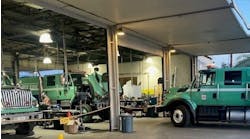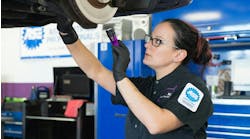It is hard to believe that it has only been a year since the current unpleasantness began. As it did, we advised our clients that we thought the event would last at least a year, and that the track of activity in the trucking economy would resemble a “W.”
Starting in the second quarter of 2020, we saw a sharp move to the downside as the pandemic-induced lockdowns brought activity to a near standstill, followed by a rebound in the third quarter of 2020 as the lockdown conditions were removed. What followed in the fourth quarter of 2020 was a period of continued growth but at a much-reduced pace, with evidence of uneven progress across several sectors of the trucking economy.
Let’s take a look at two regular reports published by MacKay & Company which provide insight on the economy: Truckable Economic Activity (TEA) and DataMac.
Trucking economy insights
TEA is the metric we use to monitor the trucking economy. It has five major components, and a brief look at the current and prospective conditions in each will tell us a lot about what to expect over the next year.
The first component, Truckable Consumption, is the largest part of TEA. It has almost fully rebounded from the pandemic effects. We expect activity in this sector to fully recover once the restraints are removed on the establishments where consumers can go to spend their income.
Truckable Investment is the second largest component of TEA, and it is the sector where we find all construction activity and all capital spending. The news from the residential construction sector has been quite good, with evidence that the pandemic effects have been completely overcome. Capital spending has also rebounded, but not quite as robustly. News is mixed in non-residential construction, but the outlook is generally favorable.
Truckable Imports and Truckable Exports make up the next largest components of TEA, and it is here that we have the most concerns. The first has to do with the physical aspects of moving goods between countries. That supply chain is clogged on both ends and it could be a year before things are completely sorted out. This will affect both imports and exports. The second concern is about exports. With our European trading partners having a great deal of difficulty reopening their economies, we expect export demand to be constrained.
The fifth component of TEA is Truckable Government, the largest segment of which is state and local government spending on construction. It will be several months before we can make an accurate assessment of conditions here because it will not be until states start making up their new budgets that we will know how much money, if any, they have to spend. Our expectation is that the revenue constraints stemming from the pandemic-induced closures of last year will force spending cuts to keep the budgets in balance.
All in all, we think the prospects for further expansion of the trucking economy over the course of 2021 are quite good and quite sustainable. We also think that progress will be uneven as the several issues we mentioned are worked out.
Aftermarket impact
Moving from the trucking economy to the aftermarket, many of the components of TEA directly impact aftermarket parts demand. This is tracked by MacKay & Company’s flagship product, DataMac.
Coinciding with the track of TEA in the past year, aftermarket parts demand plummeted during and directly following the national shutdown. Back in May 2020, our initial aftermarket forecast for Class 6 to 8 trucks, trailers, and container chassis was a decline of nearly 20 percent. By August, demand had gained back some lost ground climbing to -11 percent, and following gains in Q3 and Q4, the aftermarket ended the year at -9 percent compared to 2019.
Similar to TEA, the aftermarket is expected to come back in 2021, with a forecasted increase of nearly 12 percent. It would appear that improvement is on track with some cities and states reopening, vaccines being more widely distributed, and businesses reporting upticks.
In our monthly “pulse” of the market, DataPulse Plus, we survey both dealers and distributors on parts sales, inventory, and service labor sales. It has been a bit of a bumpy recovery, but the parts distribution channels forecast better days ahead as well. Fingers crossed.




